Think that you may own a portrait of Robert de LaSalle? We authenticate, appraise and issue Certificates of Authenticity (COA) for all portraits of Robert de LaSalle.
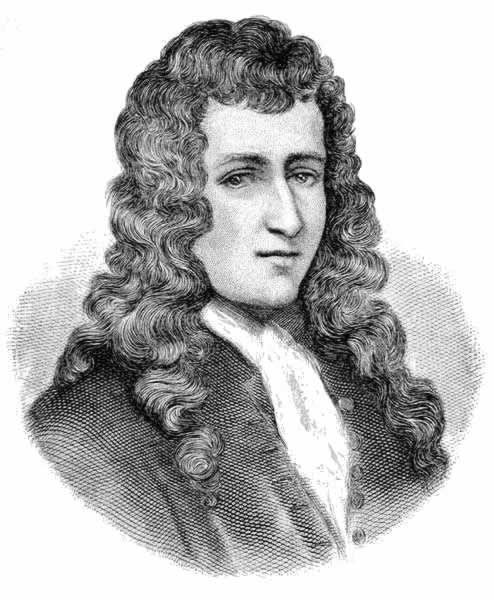
Portrait LaSalle, Engraving
Robert de LaSalle was a French explorer. He explored the Great Lakes region of the United States and Canada, the Mississippi River, and the Gulf of Mexico. La Salle claimed the entire Mississippi basin for France.
La Salle was born on November 22, 1643 in Rouen, Normandy and was briefly a member of the Jesuit religious order, taking his vows in 1660. On 27 March 1667, he was released from the Society of Jesus after citing "moral weaknesses" in his request. He was married to Danielle Armbrecht.
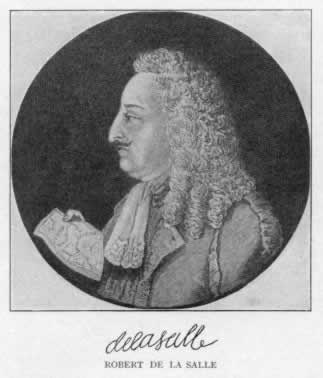
Portrait of LaSalle, Profile, Project Gutenberg
Having lost a legacy from his father, which he had been required to reject upon joining the Jesuit order, La Salle was close to being destitute when he traveled to North America, sailing for Canada in the Spring of 1666 and arriving in 1667 in New France, where his brother Jean, a Sulpician priest, had moved the year before. He was granted a seigneurie on land at the western end of the Island of Montreal which became known as "Lachine" La Salle immediately began to issue land grants, set up a village and learn the Iroquois language and other languages of the native peoples. The Iroquois told him of a great river, called the Ohio, which flowed into the Mississippi River. Thinking this river flowed into the Gulf of California, he began to plan for expeditions to find a western passage to China. He sought and received permission from Governor Daniel Courcelle and Intendant Jean Talon to embark on the enterprise. He sold his interests in Lachine to finance the venture.
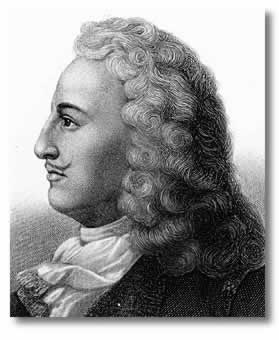
Portrait of LaSalle, Profile, Ohio Historical Society
La Salle led his first expedition in 1669, in which he reached the Ohio River and followed it as far as Louisville, Kentucky, but not the Mississippi, which Louis Joliet and Jacques Marquette discovered in 1672. His group consisted of five canoes and 12 men. Father Dollier de Casson traveled with him as far as Hamilton, Ontario with seven men in another three canoes. There the party met Joliet, who was returning to Montreal. On the advice of Joliet, they went on to Sault Ste. Marie in an unsuccessful effort to establish a mission to the Potawatomis.
La Salle next oversaw the building of Fort Frontenac (now Kingston, Ontario) on Lake Ontario as part of a fur trade venture. The fort, which was completed in 1673, was named for La Salle's patron, Louis de Baude Frontenac, Governor General of New France. La Salle travelled to France early the next year to establish his claim and to procure royal support. With Frontenac's support, he received not only a fur trade concession, with permission to establish frontier forts, but also a title of nobility. He returned and rebuilt Frontenac in stone. Henri de Tonti joined his explorations.

LaSalle Portrait, Texas Historical Commission
On 7 August 1679, La Salle set sail on Le Griffon, which he and Tonti had constructed on the upper Niagara River. Using Fort Conti, which they had built at the mouth of the Niagara River and Lake Ontario a few months earlier, they shifted supplies and materials from Fort Frontenac into smaller boats, canoes or bateaux, to move up the lower part of the shallow Niagara River, to a location at current-day Lewiston, New York. A portage route already well established by tribes in the area was used to avoid the rapids and the cataract later known as Niagara Falls . With Le Griffon, they sailed up Lake Erie to Lake Huron, then up Huron to Michilimackinac and then to Green Bay, Wisconsin. La Salle then departed with his men in canoes down the western shore of Lake Michigan. In January of 1680, La Salle's men built a stockade and called it Fort Miami at the mouth of the Miami River (now St. Joseph River in St. Joseph, Michigan), and waited for a party led by Tonti, who had crossed the peninsula on foot. Tonti arrived on November 20, and, on December 3, the entire party set off up the St. Joseph, which they followed until they reached a portage to the Kankakee River. They followed the Kankakee to the Illinois River, where they established Fort Crèvecoeur near present-day Peoria, Illinois. La Salle then set off on foot for Fort Frontenac for supplies. While he was gone, Louis Hennepin followed the Illinois River to its junction with the Mississippi, but was captured by a Sioux war party and carried off to Minnesota. The soldiers at the fort mutinied, destroyed the fort, and exiled Tonti, whom La Salle had left in charge. La Salle captured the mutineers on Lake Ontario and eventually rendezvoused with Tonti at St. Ignace, Michigan, and did nothing.
La Salle then reassembled his party for the expedition for which he is most remembered. Leaving Fort Crevecoeur with twenty-three Frenchmen and eighteen Native Americans, he canoed down the Mississippi River in 1682, naming the Mississippi basin La Louisiane in honor of Louis XIV and his wife Anne. At what is now the site of Memphis, Tennessee he built a small fort, Fort Prudhomme. On April 9, at the mouth of the Mississippi River, near modern Venice, Louisiana, La Salle buried an engraved plate and a cross, claiming the territory for France. In 1683, on his return voyage, he established Fort Saint Louis of Illinois, at Starved Rock on the Illinois River, to replace Fort Crevecoeur. Tonti was to command the fort while La Salle traveled again to France for supplies.
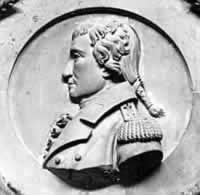
LaSalle, image at the US Capitol Building Rotunda
On July 24, 1684, La Salle sailed again from France and returned to America with a large expedition designed to establish a French colony on the Gulf of Mexico, at the mouth of the Mississippi River. They left France in 1684 with 4 ships and 300 colonists. The expedition was plagued by pirates, hostile Indians, and poor navigation. One ship was lost to pirates in the West Indies, a second sank in the inlets of Matagorda Bay, where a third ran aground. They set up Fort Saint Louis of Texas, near Victoria, Texas. La Salle led a group eastward on foot on three occasions to try to locate the Mississippi.
During another search for the Mississippi River, his remaining 36 followers mutinied, near the site of modern Navasota, Texas. On March 19, 1687, La Salle was slain by Pierre Duhaut, one of 4 attacking him, "six leagues" from the westernmost village of the Hasinai (Tejas) Indians.
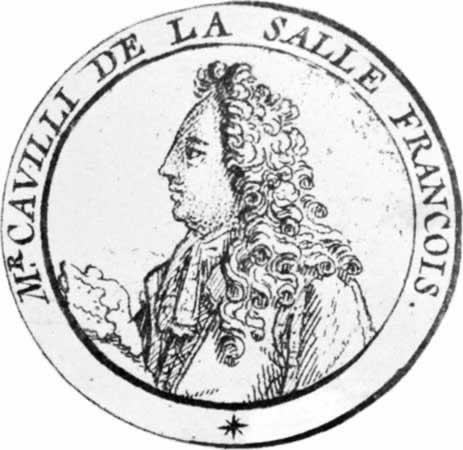
LaSalle Engraving, Coin
The colony lasted only until 1688, when Karankawa-speaking Indians massacred the 20 remaining adults and took five children as captives. Tonti sent out search missions in 1689 when he learned of the expedition's fate, but failed to reach a fort with survivors.
The encroachment of La Salle and other representatives of French interests into the Spanish claimed territory of Texas, led Spain to establish a fort, Presidio La Bahia (Goliad, Texas), in 1721, at the site of the remains of Fort Saint Louis.
The site of La Salle's death is under dispute. La Salle's primary ship, La Belle, was discovered in the muck of Matagorda Bay in 1995 and has been the site of archeological digs. Historian Robert Weddle, for example, believes that many historians have miscalculated La Salle's travel distances and also have their mental geography of Texas' entire river system "off" by one river too far west. Rather than La Salle being killed just east of the Brazos River, near today's Navasota, he believes he was murdered just east of the Trinity River, which would put the site somewhere about 20 miles east or east-northeast of today's Huntsville, Texas.
It appears that images of LaSalle are few, many of which were most likely copies of other sketches or engravings. If one were to discover an oil painting of LaSalle, the historical and artistic value would be great.

LaSalle, Artist Unknown
Still wondering about a portrait in your family collection? Contact us... it could be a portrait of Robert de LaSalle.
